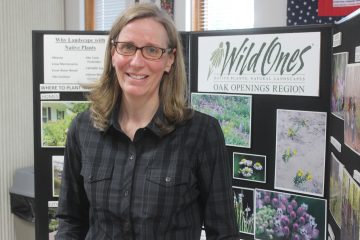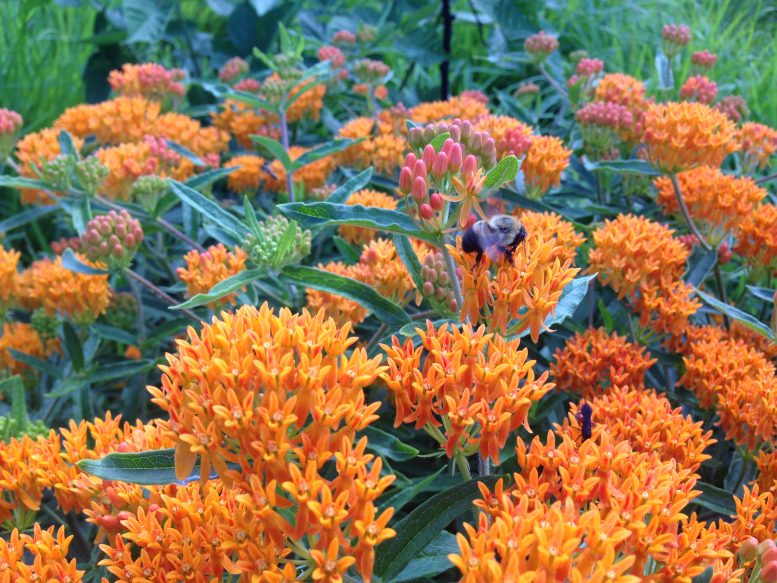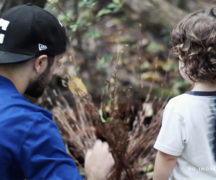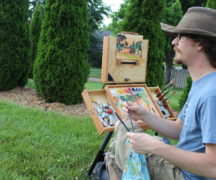By DAVID DUPONT
BG Independent News
Heather Holm is always interested in doing less work in her garden.

Heather Holm
The author would rather spend her time observing the bees, butterflies, wasps, and other insects that inhabit the space. And she was pleased to tell those gathered in the Simpson Garden Building in Bowling Green that the two go hand in hand.
Holm was in Bowling Green recently to speak on “Forget Television – The Real Entertainment is Happening Outside in Your Pollinator-Friendly Garden,” a talk sponsored by Bowling Green Parks and Recreation and Oak Openings Wild Ones. Funds from the Kuebeck Forum helped fund the program.
Holm structured her talk around what one would find on cable TV if they weren’t out observing and working on their yards. There was everything from the food channel to crime.
Her message was to cultivate plants native to the area as a way of fostering populations of pollinators needed for a healthy local environment. So plant milk weed to help feed Monarch butterflies, who depend entirely on plants for food, Holm said.
Keep in mind color – butterflies and bees can’t see red – as well as fragrance as a way of attracting them.
“There are plants that will thrive in the horrible conditions you’ve been struggling with all these years,” the Minnesota-based author said.
And ease up on some gardening chores. Holm said she leaves plant stubble up in the fall to give nesting spaces to insects. She also doesn’t clear away natural debris because 70 percent of bees nest below ground and this provides the right material they need. On the other hand, wood mulch is a barrier for those nests.
She urged the full house attending her talk to avoid applying pesticides. They inflict collateral damage on the insects that actually are better at controlling aphids and other unwanted bugs.
Holm also described the many insects, some bees, some not, that can be confused with others.
And when she reached the crime channel section of her talk she offered up an example that would make a zombie blanch. Conopid flies lay eggs inside the abdomen of a bumblebee, and then consume the bee once the eggs are hatched.
Creating pollinator friendly landscapes is not just a suburban or rural concern. Research, she said, shows bees are often more abundant in cities than in neighboring rural areas, particularly in low income areas where there are vacant lots and less use of pesticides.
Regardless of the area, Holm concluded it is important to cultivate native plants.
They support specialized relationships being particular fauna and flora. They are more attractive, four times more attractive, to pollinators than non-native species.
They are adapted to local growing conditions.
They improve biodiversity by providing food and habitat, directly or indirectly, for all organisms throughout the food chain.
For those who are interested in learning more, Holm has written two books “Pollinators of Native Plants” (2014) and “Bees” (2017).
Wild Ones is an organization that promotes the use of native plants. The local chapter is Oak Openings Wild Ones.





